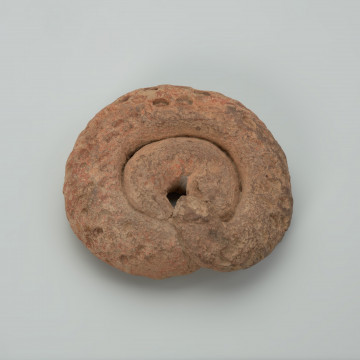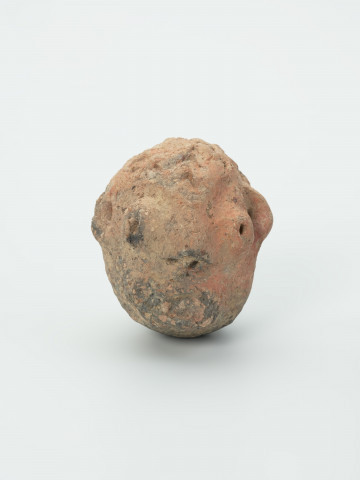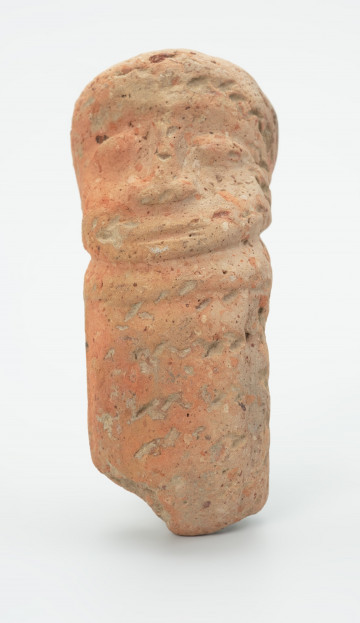
Figure
około 1460
National Museum in Szczecin
Part of the collection: Terracotta from the Niger
Terracotta items from Mali are found over a vast area and in various regions, the most characteristic of which is ancient Djenne-Jeno (also called old Djenne or Djenne, Djenne-Djenno, Jenne-Jeno, or old Jeno), located in modern Mali, on the territory of the plain called Macina, situated 130 kilometres southwest of the metropolis of Mopti and 3 kilometres from the medieval founded city of Djenne. Djenne-Jeno is considered one of the oldest cities in sub-Saharan Africa. It was founded in the 3rd century BC and was abandoned in the 14th century for unknown reasons. Terracotta sculptures, which are distinguished by their peculiar style, were found during archaeological excavations. When carving a human figure, an animal or creating a vessel, the artists used great precision to capture even the smallest detail. Sculptures from that region are richly decorated. The bodies of human figures are covered with jewellery and ornaments. Sometimes, one can see numerous convex or concave nodules resembling pustules, perhaps traces of diseases. The Bankoni region, on the other hand, has terracotta sculptures of a much simpler style, with little or no decoration on the figures. The region became famous for a series of unique zoomorphic vessels with characteristic long necks.The presented sculpture most probably depicts a horse. These animals appeared in West Africa around 1000, and their ownership quickly became an indicator of wealth and prestige. They were associated with the army, power and the ruling elite. The market value of one horse in the 15th century was 9-14 slaves. Terracotta sculptures depicting riders on horseback are identified primarily with representations of great warriors.
Katarzyna Findlik-Gawron
Author / creator
Dimensions
cały obiekt: height: 3,4 cm, width: 2,3 cm
Object type
sculpture
Creation time / dating
Creation / finding place
Identification number
Location / status

około 1460
National Museum in Szczecin

około 1201 — 1985
National Museum in Szczecin

około 1480
National Museum in Szczecin
DISCOVER this TOPIC
Castle Museum in Łańcut
DISCOVER this PATH
Educational path